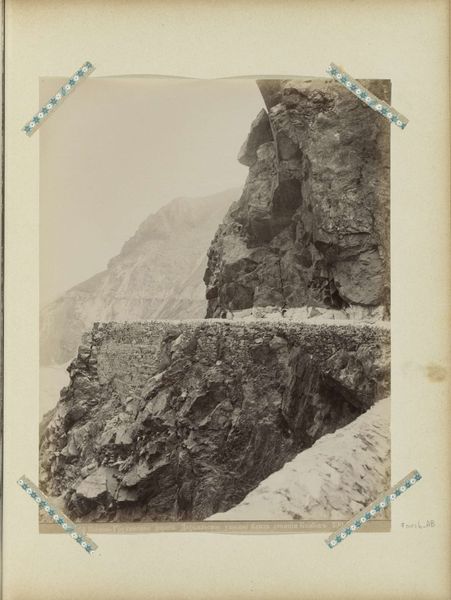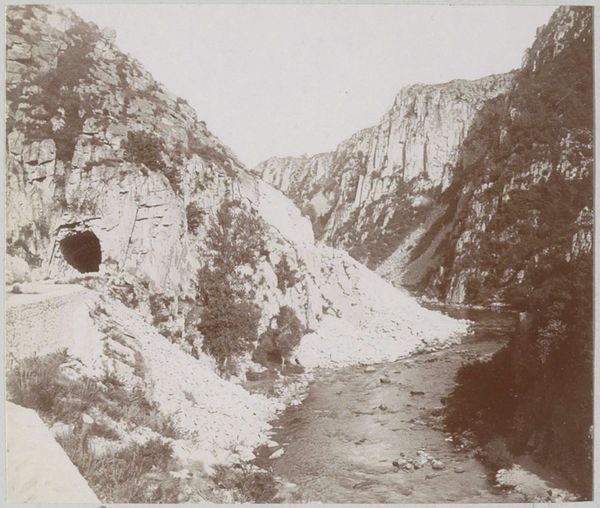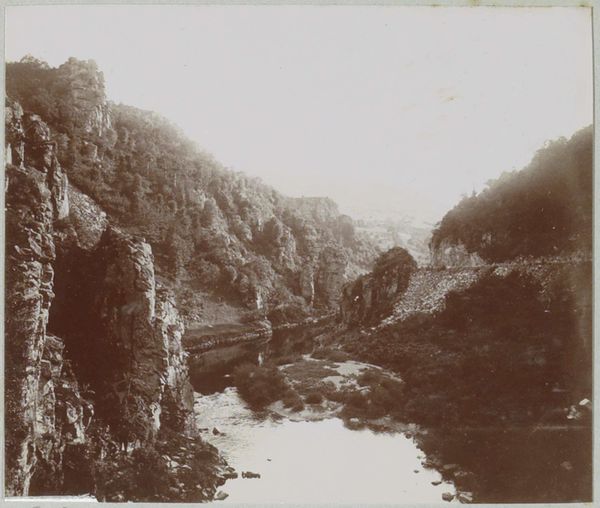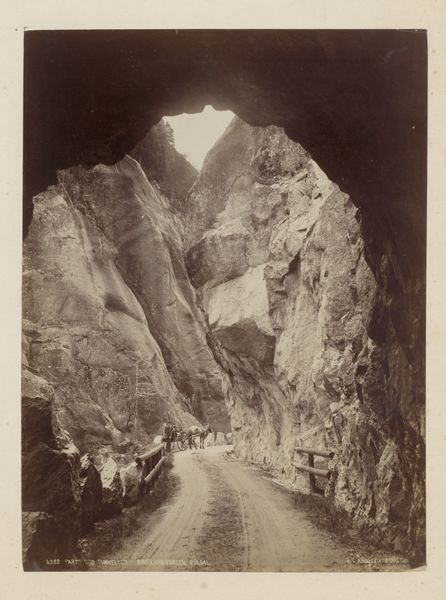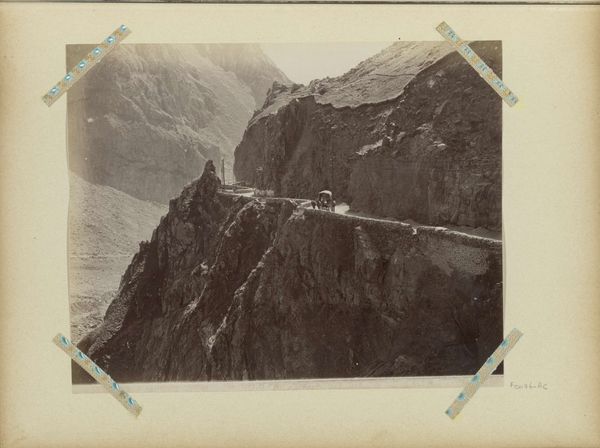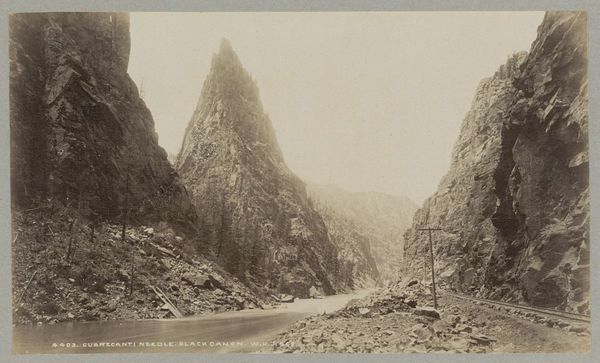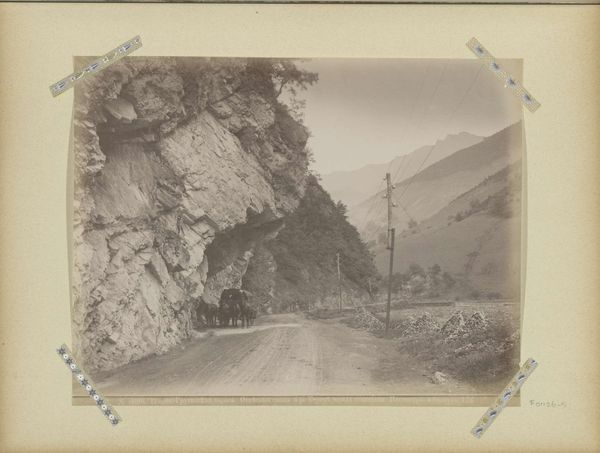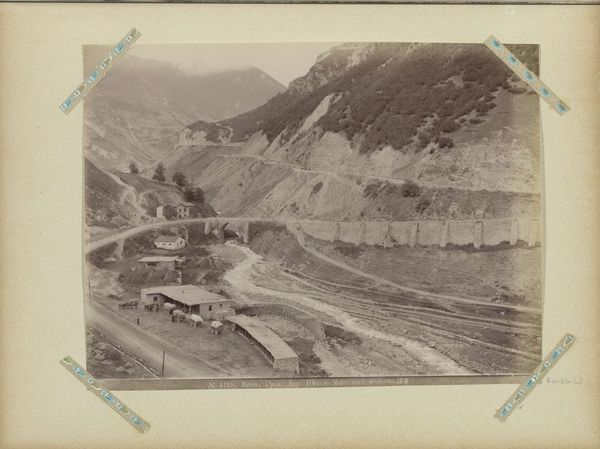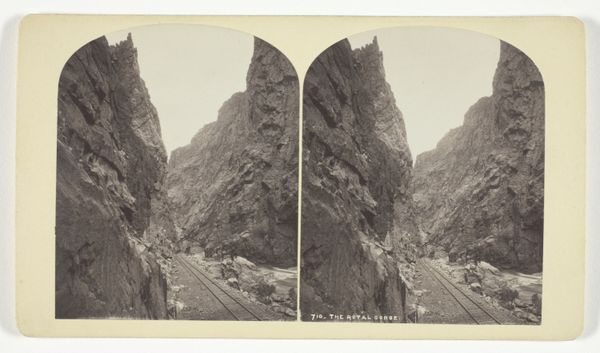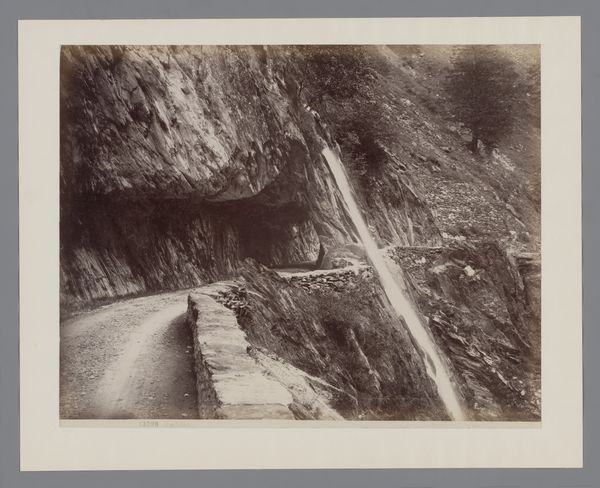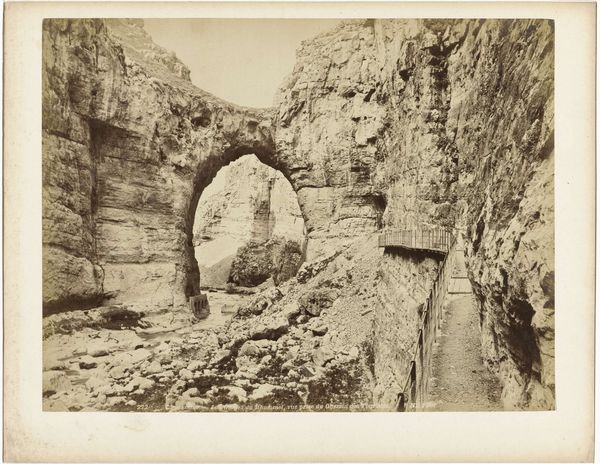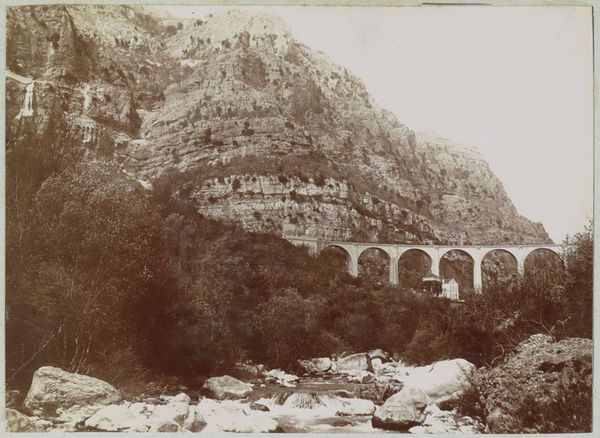
photography
#
landscape
#
street-photography
#
photography
#
italian-renaissance
Dimensions: height 200 mm, width 252 mm, height 309 mm, width 507 mm
Copyright: Rijks Museum: Open Domain
Giorgio Sommer made this photograph, Weg tusschen Amalfi en Sorrento, in Italy at some point before 1914. It shows a road cut into a cliff face, connecting two coastal towns. But what does it mean to picture this road? It's not just about geography. Roads are about power, and connection. In 19th-century Europe, the building of infrastructure became a potent symbol of modernity. It was a way of signaling progress and control over nature, as well as facilitating trade and military movement. Here, the road dominates the natural landscape, even cutting through the mountain itself. Sommer was a German photographer based in Naples, and his work often focused on landscapes and architectural views that were popular with tourists. This image would have appealed to those who wanted to experience the sublime beauty of the Italian coast. It also speaks to the rise of tourism and the changing relationship between people and the environment. By researching the history of infrastructure in Italy, and the development of tourism in the 19th century, we can start to understand the complex social and cultural forces that shaped this seemingly simple photograph.
Comments
No comments
Be the first to comment and join the conversation on the ultimate creative platform.
